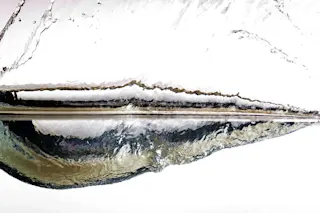A friendly trip to the beach often sparks a casual competition to see who is more skilled in the art of skipping a stone. But before the first attempt, a tactful stone-skipper will examine the inventory of seaside rocks to find a one uniquely shaped for the task. Scientists at the aptly named Splash Lab at Utah State University have perfected the skipping stone.
Through a series of experiments that applied scientific rigor to our favorite lazy beach activity, they determined that a squishy sphere will maximize the number of skips. Along with the Naval Undersea Warfare Center, Splash Lab head Tadd Truscott and his team experimented with different shapes and materials to create a squishy sphere that maximizes the number of skips from a single throw.
They published their findings Friday in the journal Nature Communications.
“Our approach was playful at first,” said Truscott in a press release. “My ...














